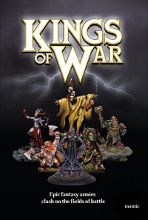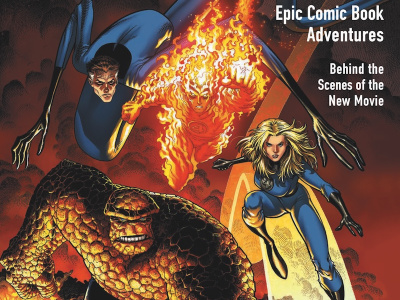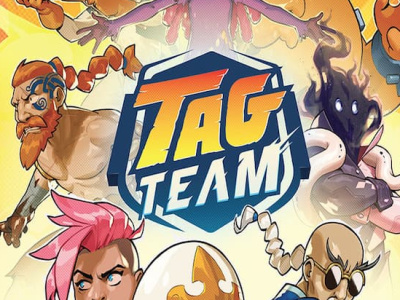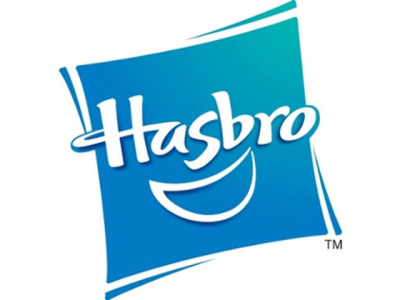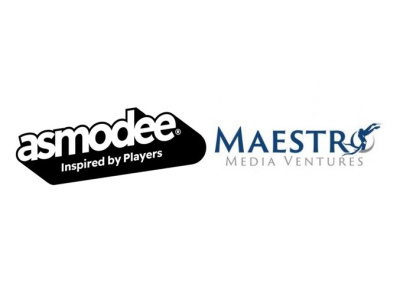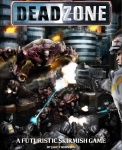 We were struck by the success of Mantic Games’ Deadzone, which raised over $1.2 million in a recently completed Kickstarter project (see "'Deadzone' Joins Million Dollar Club"). A second game, DreadBall, raised over $728,000, and two other Mantic Games raised six figure amounts as well. We spoke to Mantic community manager James Hewitt about the company’s experience with Kickstarter and how it’s interacting with the trade release.
We were struck by the success of Mantic Games’ Deadzone, which raised over $1.2 million in a recently completed Kickstarter project (see "'Deadzone' Joins Million Dollar Club"). A second game, DreadBall, raised over $728,000, and two other Mantic Games raised six figure amounts as well. We spoke to Mantic community manager James Hewitt about the company’s experience with Kickstarter and how it’s interacting with the trade release. Why don’t you introduce our readers to Mantic?
Mantic has been going since 2009, so about four years now. The company started out with a very small group of people who wanted to branch out and make some alternatives in the war game industry--some affordable models that look really cool,; that people wanted to collect but didn’t break the bank. A lot of the large companies were increasing prices for the same kind of thing and we wanted to do something different.
From there and a very small range of models, we’ve built up over the years and we’ve now got a fairly sizable following across the world.
Tell us about your first Kickstarter projects.
Our first Kickstarter started about this time last year and was called Kings of War. It’s the one where we learned how the Kickstarter process works. That was a campaign that was bringing some new life to an existing range of models we had. The Kings of War product was our flagship product that we first launched.
We had a series of miniature ranges. With the Kickstarter last year we expanded those in a fairly substantial way. Normally, we were putting out a couple of new models here and there, but with the Kickstarter we launched 22 new kits, which is a huge number for a miniatures company. We’re bringing them out over the next three months.
We’ve gone full circle with the Kickstarter campaign. We started off around June of last year and here we are June of this year actually releasing that product.
So Kings of War is shipping now?
The Kickstarter backers should be receiving their's at the start of July. It’s shipping from us at the end of June. So far it’s all been pretty much on time, which is really nice. It’s worked really well for us.
Ronnie [Renton], our CEO, just pointed out to me that Kings of War is in the top six on the CNN Kickstarters that were delivered on time. That’s my stat for the day.
What did you learn with that first Kickstarter about how to engage with your customers and get them involved?
The big thing we learned from the first one was that as soon as we promise something, we’ve got to deliver on that. Listening to customers, listening to what they want, and then working out which things are the ones to go with is really important. What we’ve found throughout the other Kickstarters as well is that you’ll get a very vocal minority, as is the way with the Internet, but if someone is saying something after two or three days, it’s probably still an issue. We were trying really hard to filter out the chaff and just go with the comments that were really popular. And sure enough we ended up with a huge list of models that people really wanted and on the whole have been really pleased with so far.
Are you talking about the figures to include in the base game or as stretch goals or both?
A little bit of both. One of the things we did differently with the Deadzone Kickstarter [was that] our initial goal was quite a bit higher than we had done previously. That’s because we knew we were going to hit a fairly large number fairly quickly. So with the stretch goals, it gave us the freedom to make the stretch goals quite a stretch, quite a cool thing that we could follow on from that.
With our early ones, we maybe set the goal lower than we could have. We could have rolled out the stretch goals more sensibly rather than having that initial rush where we had to put 70 things out in such a short space of time.
You’ve done four Kickstarters so far. The first one has shipped and the rest are all in process?
Yes, the second one we did was DreadBall and the first wave of it shipped in December. We did it in three waves. The first wave was the base game with a few additional teams and some extra cool things. That ran in September and shipped in December. That was real quick turnaround.
We then did a Kickstarter for a game called Loka, which was not produced by Mantis, but by a company called River Horse Games, which is owned by the guy who wrote Kings of War for us. It’s his company so we helped out with running the Kickstarter. That’s now in its final stages of receiving the backer surveys, so that will ship around November. And, as I said, Kings of War is starting to ship. That leaves Deadzone for the end of the year.
So what was the first Kickstarter project that you shipped?
DreadBall, funnily enough. It overtook Kings of War because Kings of War was such a large project. The scale of it was just immense. With DreadBall you had four different teams so about 40 models for the entire range (and for some models you had two of the same kind of thing). [Dreadball] wasn’t as big of a range as Kings of War, so we were able to get that out in time for Christmas in a fairly short space of time.
Did DreadBall ship to retailers also?
It did indeed. As far as I’m aware, we exceeded the amount we made on Kickstarter pre-trade in a very short space of time.
That’s an interesting phenomenon and one of the things we’re most interested in: the relationship between a Kickstarter project and your direct interaction with fans and then what happens in stores afterwards. Why do you think you were able to exceed the number that you were able to ship via the Kickstarter in stores?
It’s a really interesting thing. Because of the way Kickstarter works, you’re almost taking the place of that early investment stage. What’s happening is people are putting their money on it through Kickstarter, and those investors get a return in that they’re getting some cool products, some exclusives, some discounted stuff--that kind of thing--but then when it hits the trade launch, what you’ve also got is an army of people who are already heavily invested in the game.
If you go back to the Deadzone Kickstarter, when it comes to be released in the stores, the little independent retailer, he can see that the game is massively popular, he can see that it will sell because it has done so well on Kickstarter. So he’s not taking as big of a risk by ordering it in. He probably also has people in his store who are aware of it, who know it’s there, who want to play it and are already ordering it for themselves. It instantly generates a community.
With a game that you have funded yourself and released in the traditional fashion, you might be releasing the core game and maybe one or two add-ons. A retailer might look at that and go, "Mmm, I’ll give a go. I’ll try one or two sets and see how it goes." With something like Deadzone where they know it’s already a winner I think it hits retail and it just explodes. Dreadball is a great example. It’s done such crazy numbers since it was released and it’s still growing. You wouldn’t think the game’s only six months old.
Do you typically have retailer levels in your Kickstarter campaign?
Retailer levels are something we brought in with DreadBall (and the products since), where retailers could buy with their usual discount but get some extra freebies as well.
For example, with Loka, the one I’ve been working on, the chess game, we’ve put together a bundle which is their regular trade discount but also several of their sets get bumped up to the sweet spot backer level from Kickstarter so they get lots of cool stuff as well. They’re not missing out on the fun and they can pass them onto their customers.
So when you said your sales to retailers exceeded your sales through Kickstarter, were you including those retailer backer levels?
There’s two things. We’ve got the gaming store backer levels so a store can back the Kickstarter project and get that package with some additional free stuff at the regular trade discount. But as soon as it actually gets into production and we start selling it normally, then it goes through our regular distribution channels. With DreadBall, where we’ve beaten the Kickstarter numbers, that is through our regular distribution channels.
How has Kickstarter changed your company?
It’s grown it massively. We’ve been recruiting, we’ve been pulling new people in. Also it’s really increased people’s awareness of Mantic as a company, especially when DreadBall went out. We get more people looking at our other games as a result of DreadBall. There are so many more stores calling us up saying they’d like to stock our products. As time goes by we’re seeing more and more people who are coming on board because of the press that we’re getting from Kickstarter.
It has been noted that a lot of the game Kickstarters have been for miniature game products (see "Top Ten Tabletop Kickstarters: How They Do It"). What do you think the overall impact of Kickstarter on the gaming miniatures business is or is going to be?
The game industry as a whole is going through a really, really good time right now. There’s a real sense of growth and positivity and new things branching out and Kickstarter is massively to thank for that. Without something like Kickstarter you wouldn’t have people who can come up with an idea, come up with some prototypes and make a product. What’s brilliant is that it scales, so you get small, one-man operations where a guy has an idea, makes something with bits of cardboard [to] make the game and sells a few hundred copies, but also with a company like Mantic--which is still quite a small company, still growing--it gives us the opportunity to go all out and produce something in a really big, gutsy fashion.
DreadBall, for example, if we’d produced with without Kickstarter, we would probably only now be releasing the third and fourth teams from the first season, where now we’re releasing teams four to eight. We wouldn’t have had the confidence to put our product out there and put our money behind it and say, "This is definitely going to sell." Whereas with Kickstarter, it’s a sure bet.
Miniature companies have historically taken a long time to get bigger and once they’re big, they tend to stay there. Games Workshop and Privateer have been on the top of the fantasy and science fiction gaming miniatures lists for years. Now there’s a bunch of companies using Kickstarter to join those ranks. What do you think the presence of Kickstarter does to the competitive situation for miniature gaming companies?
I think it really pushes everyone to be on their "A" game because it’s not a monopoly anymore. There are loads of small companies that have come up in the last few years who have got the chance to really show what they can do and really be something quite big quite quickly.
As you say, 10-15 years ago, there’s no way that could have happened. Now there are so many companies all doing really interesting things and all taking things in their own little directions. Companies like us who are producing our own games, our own miniatures, some are just producing things to be used with other games that are already out there. On the whole it’s grown the industry massively and I think the ones that have traditionally been on top have got to pick it up and roll with the punches, really keep innovating so they can stay ahead.
Where are your new customers coming from? Were they formerly buying miniature game products from other companies, or are they people who have never played miniature games before?
We’re noticing quite a shift. When we first started out our customers were almost exclusively people who had come from other companies, who had maybe seen the prices of things and looked at us that thought, "I’ll try Mantic."
But since DreadBall, we’ve noticed an explosion of interest from board game fans. DreadBall’s a hybrid board game/miniatures game. We got a huge number of people who weren’t interested in miniature wargaming but wanted to pick up DreadBall. That’s infused a lot of new people outside of what was previously our core demographic who are now quite big Mantic fans and who we’ve seen on the Deadzone Kickstarter. A lot of people who came and joined us for the ride on DreadBall have now stayed with us through Deadzone. As a result, one of the things we offered was a board game edition which was pre-assembled miniatures in colored plastic so people didn’t have to build and paint the models if that wasn’t their skill set.
What’s next for Mantic?
We’ve got three months of Kings of War releases; loads of really cool stuff. All that stuff that was funded through Kickstarter is now going out through the regular retail trade channels. It will be available through our Website, obviously through other online retailers as well. So that’s the next three months.
We don’t like doing things one at a time, so we’ve also got the license for Mars Attacks!, which is going to be very exciting (see "'Mars Attacks' War-Game"). We’re still working out what that means--what it’s going to be, what we’re going to do--but whatever happens there’s going to be some miniatures with Martians and army men fighting and it’ll probably be hilarious because it has to be because it’s Mars Attacks!. So that’s the next big thing on our radar.



